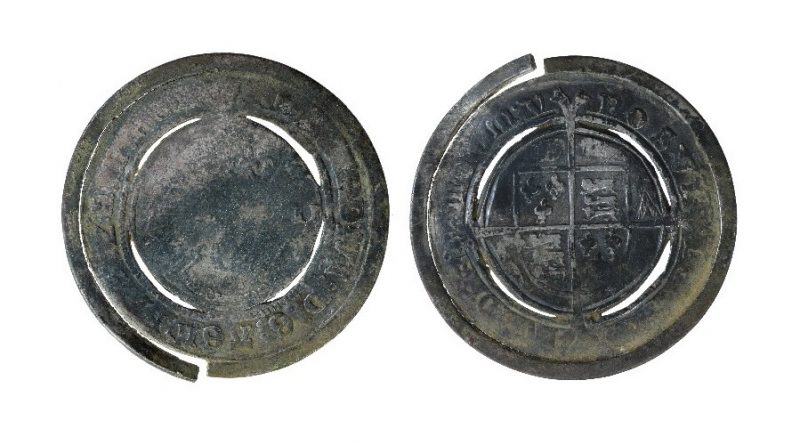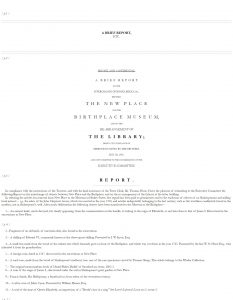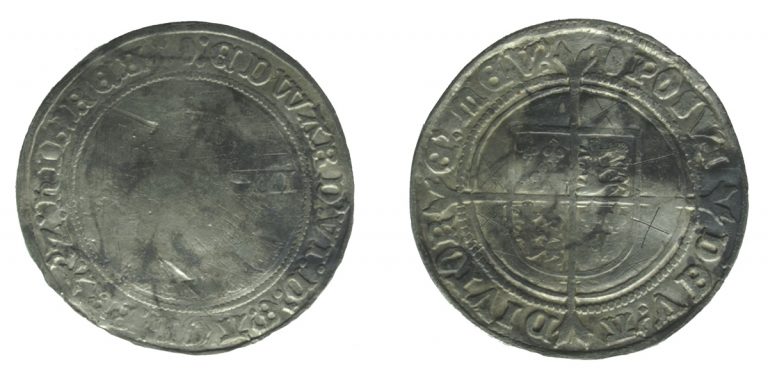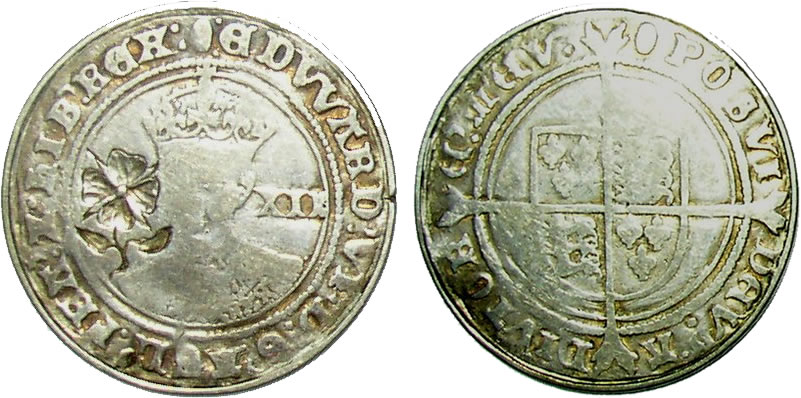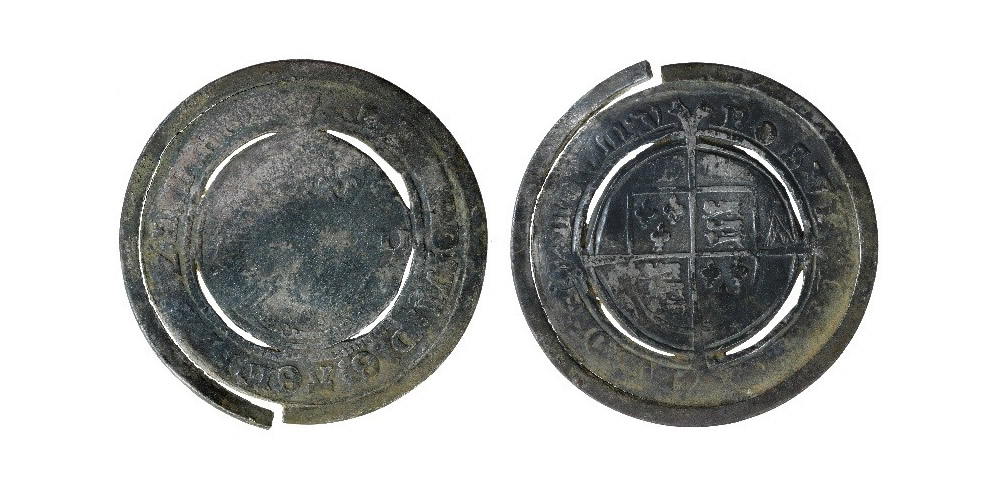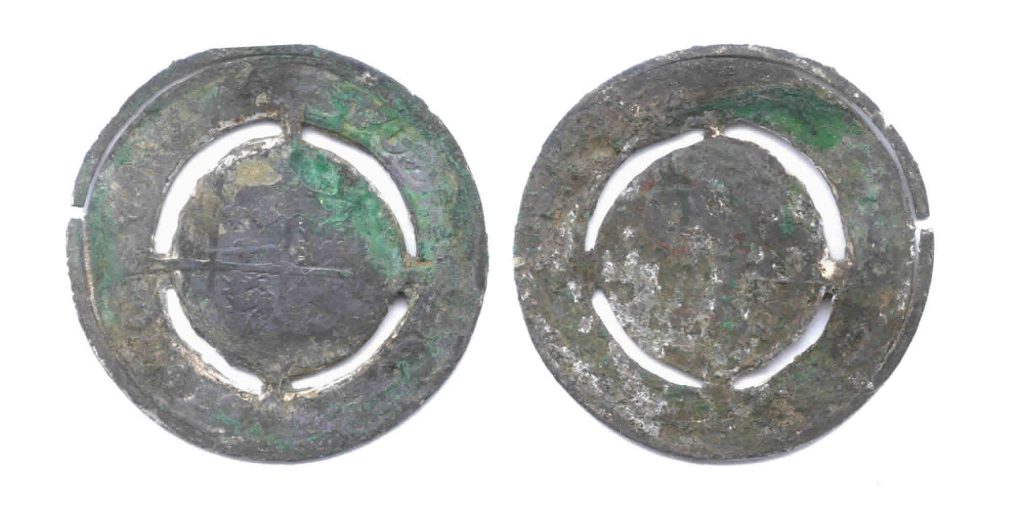Mystery of the Shovel-board shilling
Edward VI Shovel Board
The Treasure Registrars announced this week that the detectorist, Clinton Rolfe, who found this piece has waived his reward under the Treasure Act, thereby donating it to the British Museum.
It’s a modified Edward VI shilling. What is the purpose of the modification?
PAS report
PAS ID: NMS-C753F4
Found: St Edmundsbury, Suffolk in 2016
This Edward VI shilling has been modified by making four crescent apertures along the line of the inner circle, leaving the cross on the reverse intact. It has then been mounted in a silver frame. It is thought this was done to form a gaming piece. The suggestions in the PAS report are that this was either a counter or used in a game similar to shove ha’penny.
Treasure
This piece has been treated as an item of treasure. Precious metal coins, over 300 hundred years old, that have been modified for another use are considered as objects (rather than coins) for the purposes of determining their status under the stipulations of the Treasure Act 1996. If you are in any doubt as to whether an item constitutes treasure, you should report it to your FLO.
Expert advice
While researching this piece, I sought expert advice on shovel-board shillings from W Bryce Neilson, author of Shove-Ha’penny.1 and Gary Oddie author of Shovel-Board Shilling, A Tudor and Stuart Pastime.2. I am grateful to Bryce and Gary for their advice and images they have provided. There seems to be a consensus that this piece is a Shovel-Board Shilling
Shovel-Board
Origins of Shovel-board
Shovel-board involved propelling a coin or metal disc along a table into various scoring zones.
It probably began during the reign of Henry VIII as he is recorded as losing the sums of £9 and £45 at “Shovilla Bourde” in 1532 and another source says that game was not invented before the reign of Henry VIII 3. Henry was an inveterate gambler and his losses at dice, backgammon, shovel-board etc in one year amounted to £30,000.4 This royal patronage was probably why it became a favoured pastime of the upper classes.
Another game called shove-groat was also played with an Edward VI shilling. This is why these coins are sometimes known as shove-groat shillings. Shove-groat was outlawed in 1522.
Popularity
Shovel-board was an exceedingly popular game. During the 17th century Inns would have rooms dedicated to the playing of shovel-board and tables were to be found in stately homes and professional societies. The game ceased to be played by the early 19th century.5
Literary references
Shakespeare
In The Merry Wives of Windsor, Slender is robbed of “two faire shovel-boards, that cost me two shillings and twopence apiece”
Other literary references
In 1621, John Taylor’s poem A Shilling, or the travels of a twelve-pence, referring to an Edward VI shilling: ““For why with me the unthrifts every day, with my face downewards do at shove-boord play“.6
In 1653, The Complete Angler by Walton and Cotton “we played at shovel-board half the day“
In 1664, Samuel Pepys writes: “played at shuffle-board, eat cream and good churies“
Tables
A shovel-board table could be of varying sizes and Inns would have rooms set aside for the game. For example, in a study of the large, high-status inns in Henley, the inventory from 1665 shows that two had shovel-board rooms. The Catherine Wheel Inn shovel-board room contained “the long table and three little tables“.7
In the 17th century, the game continued to be played by the nobility and the professional classes. In the 1622 accounts of The Honourable Society of the Inner Temple (one of the Inns of Court in London) there is an entry “To Ramsey, the joiner, for a new shovel-board table of wainscot, £1 13s 4d.”.8
Littlecote House
In 1915, the Hon. Secretary of the Hampshire Field Club and Archaeological Society wrote an article on an “Excursion to Littlecote”.5
In it, he describes the great table at Littlecote House and says that in Nash’s “Mansions of the Olden Time, this table is shown being used for the game of shovel-board and that this was the purpose for which it is made so long is highly probable“
Cefn Mabli Shovelboard

This is the Cefn Mabli Shovelboard now housed in the Orangery at Tredegar House.
In 1684, Thomas Dinely wrote of this table “an extraordinary shovelboard of 42 foot in length and of one entire plank of an oak whereof 20 foot was also cut off before”.9
It was made in the Civil War period.10
Astley Hall
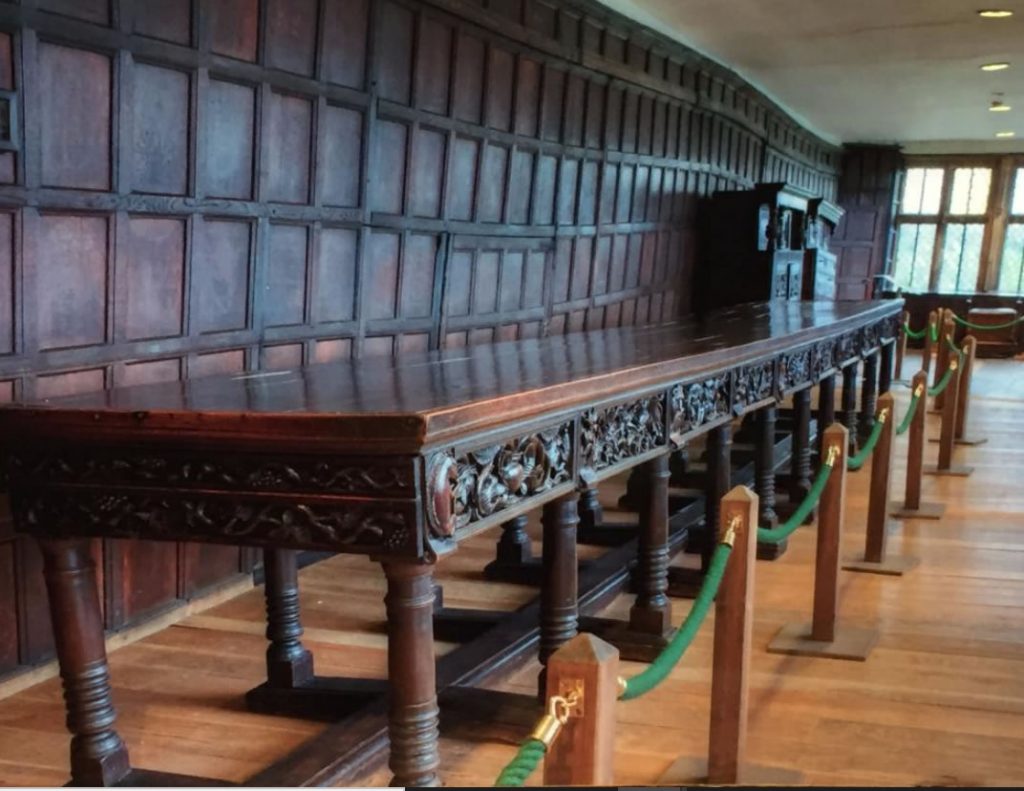
Another surviving table is at Astley Hall in Chorley, Lancashire. It is 27 feet long and illustrates what significant pieces of furniture they were.
Playing Pieces
A coin of high silver content would be favoured for a sliding game as it would wear down more evenly than a debased coin.
There appear to be three main candidates for the type of coin used to play shovel-board.
1. A standard silver shilling, unmodified, except for some form of personalisation
2. A pattern silver shilling
3. A shilling with an added silver rim
Standard shilling piece
The original playing piece would have been the groat. When Edward VI issued the fine silver shillings in 1551, these became the playing pieces of choice. The John Taylor poem (above) suggests that the coin was normally played face down .
Referring to the Joh Taylor poem, John Evans, writes “This statement as to the Edward shillings being placed face downwards in the game throws some light on the cause of the obverse of these coins being so frequently more worn than the reverse“.11
A couple of examples on the PAS database exhibit this type of wear. The reverse is personalised with”IH” in the first example (BUC-EC3A8E) and crosses scratched into the angles in the second (PUBLIC-003AF3).
Photos: PAS, CC BY SA2.0
This all supports the idea that Edward VI fine silver shillings were used to play some form of coin sliding game.
Pattern Shillings
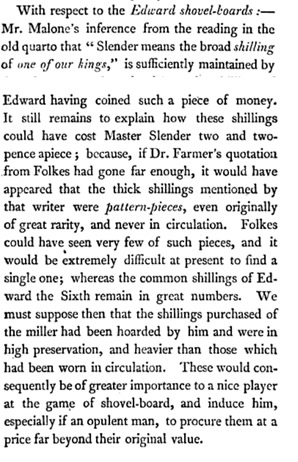
Extract from Illustrations of Shakespeare, and of Ancient Manners by Francis Douce, pages 53-53, 1807
In the extract shown here, Francis Douce, in 1807, considers the coins referred to in the Shakespeare quote “two faire shovel-boards, that cost me two shillings and twopence apiece”. 12
He asserts that the coins being referred to are pattern pieces. He notes the extreme scarcity of these coins. Pattern pieces were heavier and thicker than a normal shilling.
The problem with this idea is that, although a few pattern shillings from Edward VI second period are known, there are no known examples of the pattern shilling of Edward VI’s fine coinage. Had there ever been any over-weight pieces they would have been presentation pieces and would be known today.
Francis Douce’s explanation therefore seems unlikely.
Shillings with added rims
Silver rims were added to shilling, with one side flush and the other protruding. Gary Oddie has located 15 Shovel Board shillings, including two using coins from Charles 1.13 The choice for which is the “up” side appears arbitrary.

Two of the coins that Gary has identified have wider rims. These have a personalisation mark on both sides in contrast to the narrow rim versions, which are only personalised on one side. This suggests that these wider rimmed pieces could be played both ways up. The different sides would have different playing characteristics.
In 1632, Elizabeth Warren is convicted of stealing “three shovelboard peeces of silver” worth three shillings and sixpence.14 Here, the premium for a shovel-board shilling is much smaller than in the Shakespeare example and may reflect the differing amount of work, if any, that had been used to make a shovel-board piece. It also describes these as “peeces of silver” and so they may have been specially made for the game, rather than modified coins.
Edward VI Fine Silver Shillings
Although two modified shovel-board shillings are known using Charles I coins, the vast majority are fine silver Edward VI shillings. In addition, there are a number of literary references to these shillings being used.
Fine silver - Third Period
The coins struck during the first two periods of the coinage of Edward VI were of a similar debased nature as those struck towards the end of the reign of his father’s, Henry VIII. This made them unsuitable for a coin sliding game. In 1551, in the third period of his coinage, Edward issued money of fine silver, including shillings.

This image shows the larger fine silver shilling beside the earlier second period shilling.
The quality of workmanship on the fine silver shillings was a lot higher and the flan was consistently rounder.
In the previous coinage, the blanks were produced with less care, the letters were irregularly punched in and the finished coins were less pleasing to the eye. There appeared to be no reason for this state of affairs.15
There was a change in the under-treasurers at the Tower mint, following the discoveries of “great irregularities” towards the end of 1551.16 This may have led to an improvement in standards.
With its increased fineness and better workmanship, it is easy to see why this coin was so popular. The full face portrait of the boy king may have also been a factor.
Enduring popularity
There were subsequent coins that would have served just as well as the Edward VI fine shilling, but this coin had enduring popularity for several centuries afterwards.
In 1905, John Evans says “at the events within my memory, it was sometimes the case that a small hoard of Edward VI fine shillings was to be found among the hereditary treasures of old families“.11
This piece
The piece found by Clinton Rolfe (NMS-C7534) is an Edward VI fine silver shilling. It has a narrow rim and a personalisation mark, in the form of an inverted V, in the first quarter of the reverse. These features mark it out as being a shovel-board shilling.
The purpose of the additional slits to the coin is a mystery.
The presence of the personalisation mark would suggest that the addition of the slits is not a means of identifying the owner of the coin. Bryce Neilson suggests that the slits may serve to remove any air cushion properties.
Photos: PAS, CC BY SA2.0
There appears to be only one similar example on the PAS database: NARC-F2D58. These two pieces were found some 95 miles apart. Neither Bryce Neilson or Gary Oddie have encountered one before.
As Gary said, “One example might be an accident, two may be a coincidence, so will keep my eyes open for a third one and then it’s a pattern!”
Can you help?
Have you found or do you know of a coin which has been modified with a silver rim attached. In particular, are you aware of one with the additional slits. It may be badly corroded, as in the second example on the PAS, and you have dismissed it. Please contact me if you have or know of one.
References
- Shove-Ha’penny by W Bryce Neilson, November 2018
- Shovel-Board Shilling, A Tudor and Stuart Pastime by Gary Oddie, Pages 292 – 303, Token Corresponding Society Vol. 9, 2007
- The Drama : or,; Creed, G London Vol. 2, Iss. 5, (Mar 1822): Page 226
- Nicolas, Privy Purse Expenses of Hen. VIII.
- Hampshire Field Club and Archaeological Society, Excursion to Littlecote, 1915
- The Trauailes of Twelue-pence 621by John Taylor, 1
- Henley’s Major Inns in the Seventeenth and Early Eighteenth Centuries by Barbara Allison.
- Calendar of Inner Temple records vol 2 1603 1660
- The Account of the Official Progress of His Grace Henry the First Duke of Beaufort through Wales in 1684, Thomas Dinely
- The Orangery Garden at Tredegar House, National Trust website
- Evans, John. “A NUMISMATIC QUESTION RAISED BY SHAKESPEARE.” The Numismatic Chronicle and Journal of the Royal Numismatic Society, vol. 5, 1905, pp. 307–314. JSTOR,
- Illustrations of Shakspeare and of Ancient Manners, Francis Douce, 1807, pages 53-54
- A New Type of Shovel Board Shilling – Gary Oddie
- Middlesex Sessions Rolls: 1632, Pages 41-49
- The Coinage of Edward Vi in his own name, W. J. W. Potter, 1949
- THE SILVER COINS OF EDWARD VI. B Y LIEUT.-COLONEL H . W . MORRIESON, F.S.A ., 1916
Photos: PAS, CC BY SA2.0

